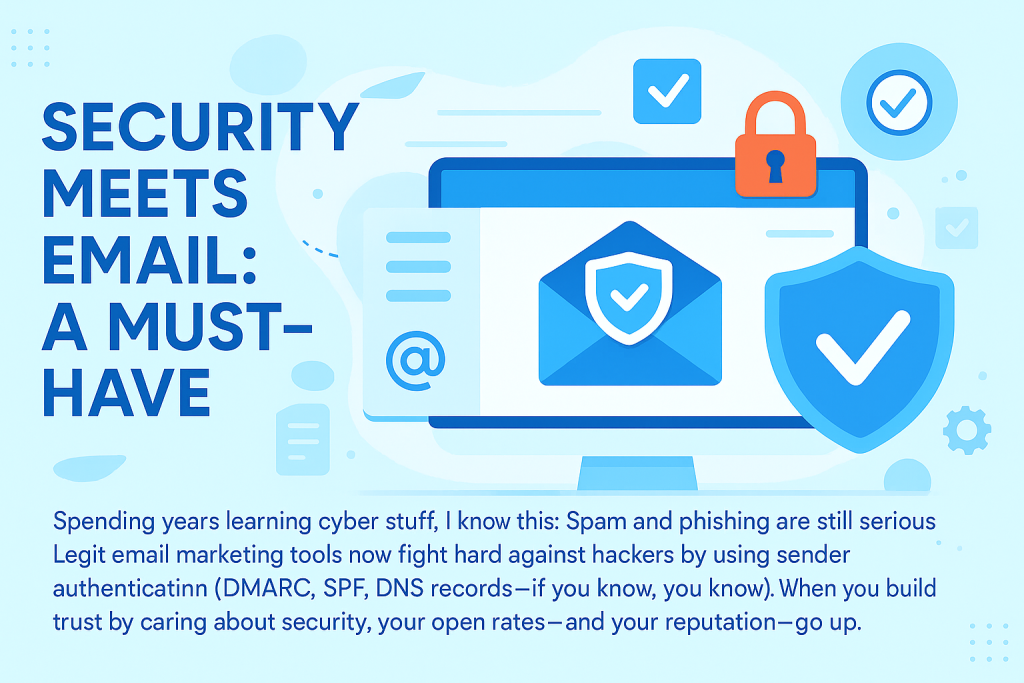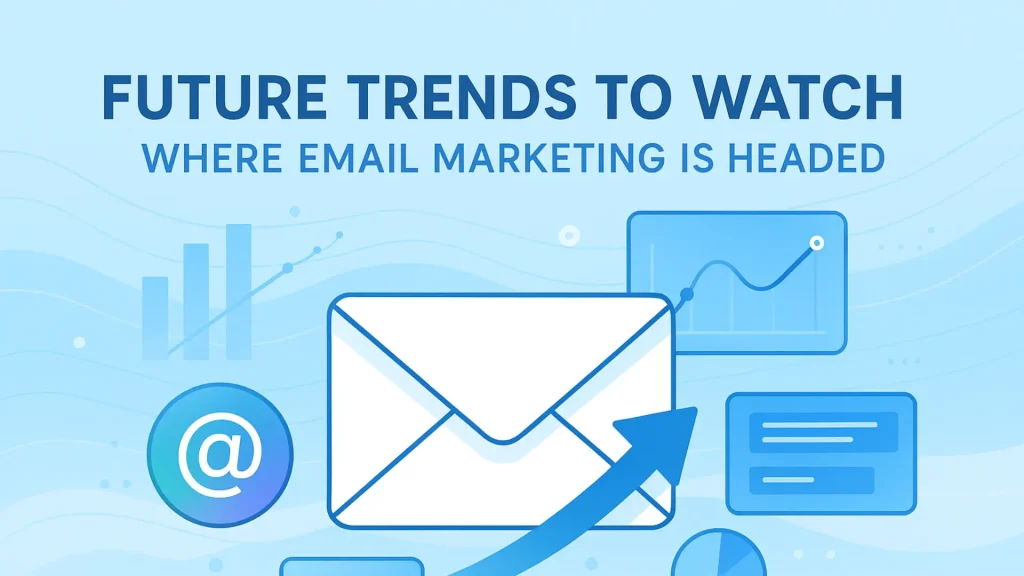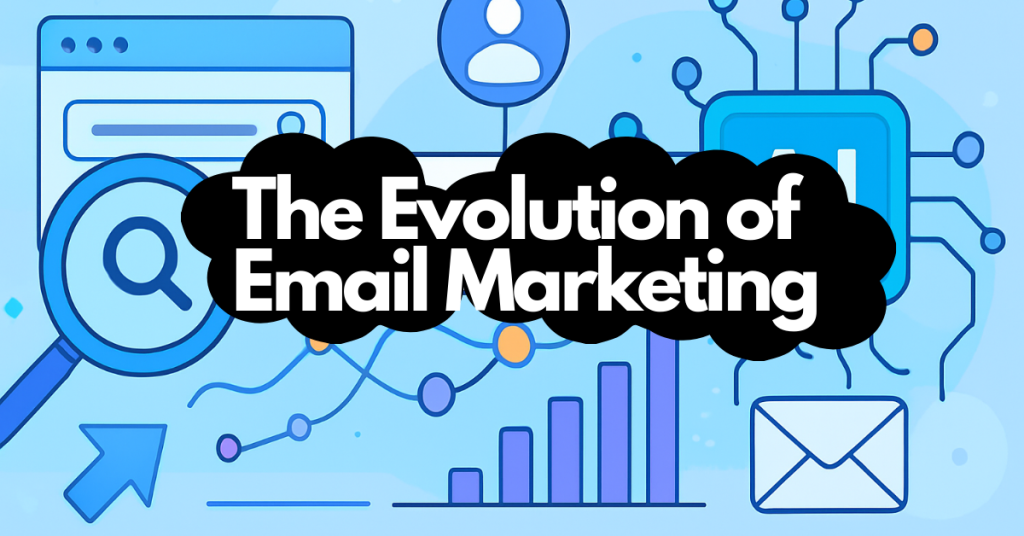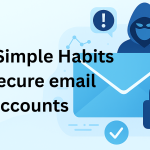Hey, it’s Jiyasrul (@jiyasrul1)—super passionate about cybersecurity, and honestly, just a nerd for everything internet safety and digital trends. Today I’m taking you on a wild ride: email marketing. But not just how-tos or fluffy tips; let’s talk about the real journey, from boring search-based newsletters to brainy, AI-powered magic. 🧙
What Is Email Marketing Really All About?
Before getting fancy, let’s get real: Email marketing is just using emails to talk to people who might want what you’re offering. Back in the day, it was “Hey, here’s our newsletter—please don’t delete!” Now it’s weirdly smart, learning what you want before you even do.
My Take: Email Feels Personal…When Done Right
When I first started out (just a curious kid, honestly), promo emails felt super spammy. Once I got a bit older and started building my own things online, I saw how one good email could bring real people together. That’s when I realized: Bad email is noise. Good email = actual connections.
The Search Age: When Email Was Just “Digital Flyers”
Let’s rewind to the 1990s and early 2000s. People sent emails because “everyone else is doing it.” It was all about getting found when someone searched for your name, not necessarily what they needed. If someone typed a word in their mailbox search and found your newsletter, that was a win.
Search-Based Email: Pros & Pain Points
Back then, marketers relied on keywords and basic searchability. That meant tons of generic newsletters.
Downsides:
- No personalization
- Everyone got the same email
- It was easy to ignore
(That’s my first allowed list, promise I won’t go overboard.)
The Big Shifts: HTML, Design, and Permission
Suddenly, inboxes weren’t just black text—images, colored fonts, and branded buttons became normal. But with power came…spam. Real friends buried under “NEWSLETTER BLAST #232.” If you were like me, you got really good at the delete button.
Permission Marketing Begins
Marketers wised up: Nobody likes being shouted at. Permission-based marketing asked people to “opt in.” Not only did this make sense, but in cybersecurity, it’s much, much safer.
Imagine this: Instead of getting 200 random emails, you get a few you actually want. This basic switch is still huge today.

Security Meets Email: A Must-Have
Spending years learning cyber stuff, I know this: Spam and phishing are still serious. Legit email marketing tools now fight hard against hackers by using sender authentication (DMARC, SPF, DNS records—if you know, you know).
When you build trust by caring about security, your open rates—and your reputation—go up.
Automation: When Email Marketing Got Lazy (and Smarter)
Fast-forward to the mid-2010s. Automation comes along. Instead of sending every email one by one, tools like Mailchimp and Sendinblue blast thousands at once. Welcome emails, reminders, thank-yous—all on autopilot.
My Experience Automating Things
Honestly, automation kind of freaked me out at first. Would it feel fake? But, when I started using triggers (“Hey, you left something in your cart!”), I saw better results. Pro tip: Never automate everything. Classic rookie mistake—no one likes talking to a robot.
Personalization 101: Say My Name, Not Just “Dear Customer”
One rainy afternoon, my inbox had two emails:
- “Jiyasrul, check out this new VPN!”
- “Dear Valued User.”
Guess which one I clicked? Names matter. So do behaviors: clicked links, past purchases, what people don’t click, etc.
Data-Driven Segmentation
This is where nerdy magic happens.
Emails are sorted and tailored by:
- Geography
- Past interactions
- Time of day
(No more lists after this, pinky swear.)
Visual: Timeline Table—Email Marketing Evolution
| Year(s) | Big Thing That Happened | Jiyasrul’s POV |
|---|---|---|
| Early 1990s | First emails, basic plain text | “It was simple, but honestly boring.” |
| Late 90s | HTML emails | “Suddenly emails looked cool, but spam!” |
| 2000s | Double opt-in, CAN-SPAM laws | “Permission matters for trust.” |
| 2010s | Automation, segmentation | “Got my first Mailchimp headache!” |
| 2020s & Now | AI, Hyper-personalization | “Feels like the emails read my mind.” |
The AI Revolution: When Emails Got Super Smart
By 2025, we’re not talking basic mail merges. AI-powered tools learn from user behavior, patterns, and preferences almost instantly.
Key stuff that blew my mind:
- AI writes subject lines and tests which ones you’ll open
- Predicts best time to send so your email lands on top
- Adjusts content for different people automatically
How AI Actually Works in Email Marketing
Here’s the scoop:
The AI goes through mountains of your email data. It looks at what people open, what they ignore, and how long they stick around. Then, it tweaks everything in real-time—subject line, images, even the sending time.
Hyper-Personalization: “It’s Like My Inbox Knows Me”
Sometimes it creeps me out, but—AI can know what you want before you do. Bought a keyboard last week? Expect an email about cool keyboard shortcuts.
It’s all about recommendation engines and dynamic content that changes based on who’s viewing it.
Example: My Favorite Tools
Some of my current go-to’s (not sponsored, just honest):
- Klaviyo: For dynamic e-commerce campaigns
- ChatGPT plugins: For quick draft variations
- Grammarly: Not just for spelling, but tone adjustment
For smaller lists, even Gmail add-ons work surprisingly well!
AI in Action—Real Results
Open rates go up, click-through rates rise, and fewer emails get deleted without being read. Statistically, some businesses using AI in email marketing have seen open rates rise by up to 30% and click-through rates by over 13%. But here’s my real story: When I switched to subject lines tested by AI, my own engagement doubled.
Before: 8% average open rate
After AI-tweaked subjects: 16% open rate
These aren’t just numbers—they’re people actually reading what I write.
Dark Side of the Email Force: AI Spam and Oversaturation
When every marketer uses AI, inboxes fill up (again). It’s a real arms race. So, you have to add more value—teach, tell real stories, solve real problems. AI is a tool, not a replacement for your voice.
How I Keep It Real
Whatever tool I use, I always add something personal. Maybe a cybersecurity meme, a quirky sign-off, or even a question (and yes, I actually check replies).
Privacy and Security in the Age of AI
2020s privacy rules (think GDPR, CCPA) changed the game. You can’t just spam—consent and transparency are non-negotiable. Plus, AI must handle personal data responsibly.
As a security nerd, I love when brands are clear about why they’re writing and how they keep data locked down.

Future Trends to Watch: Where Email Marketing Is Headed
If you’re just getting into email marketing or wondering where it’s all going—good news, it’s only getting more interesting.
- Fully automated visual emails—think videos and polls, but not annoying autoplay stuff
- Voice and audio snippets in messages
- “Smart” inboxes that filter emails you actually care about
- First-party data (because privacy > buying big old email lists)
FAQs About Email Marketing and AI
Q: Is AI going to replace human marketers?
A: No way! AI helps, but it doesn’t get jokes or emotion like real people.
Q: How do I keep my emails out of the spam folder?
A: Get permission, use real sender info, and always double-check your links and content for anything sketchy or ‘phishy.’
Q: Does personalization just mean using someone’s name?
A: Nope! True personalization is about timing, content, and solving someone’s real need, not just “Hi [FirstName]!”
Q: Aren’t AI-generated emails boring?
A: They can be, if you let AI run wild. Always review, edit, and add a personal touch.
Q: Is email marketing still worth it?
A: 100%. Despite TikTok, Instagram, and all apps, email is still where you own the connection.
My Final Thoughts (And Why This Stuff Excites Me)
From basic “search” newsletters to mind-reading AI assistants, email marketing is maybe the coolest experiment in real-time digital relationships. I’ve learned, failed, tested, and grown my own audience—and I still get hyped when someone replies with a “thanks!”
Embracing AI isn’t about losing your voice, it’s about scaling your impact and freeing up more time to connect, learn, and help others—especially in the world of cybersecurity where trust is everything.
So, next time you open your inbox, remember: There’s a human behind every great email. And if you ever want to geek out over digital safety or smarter email, come say hey (@jiyasrul1).

